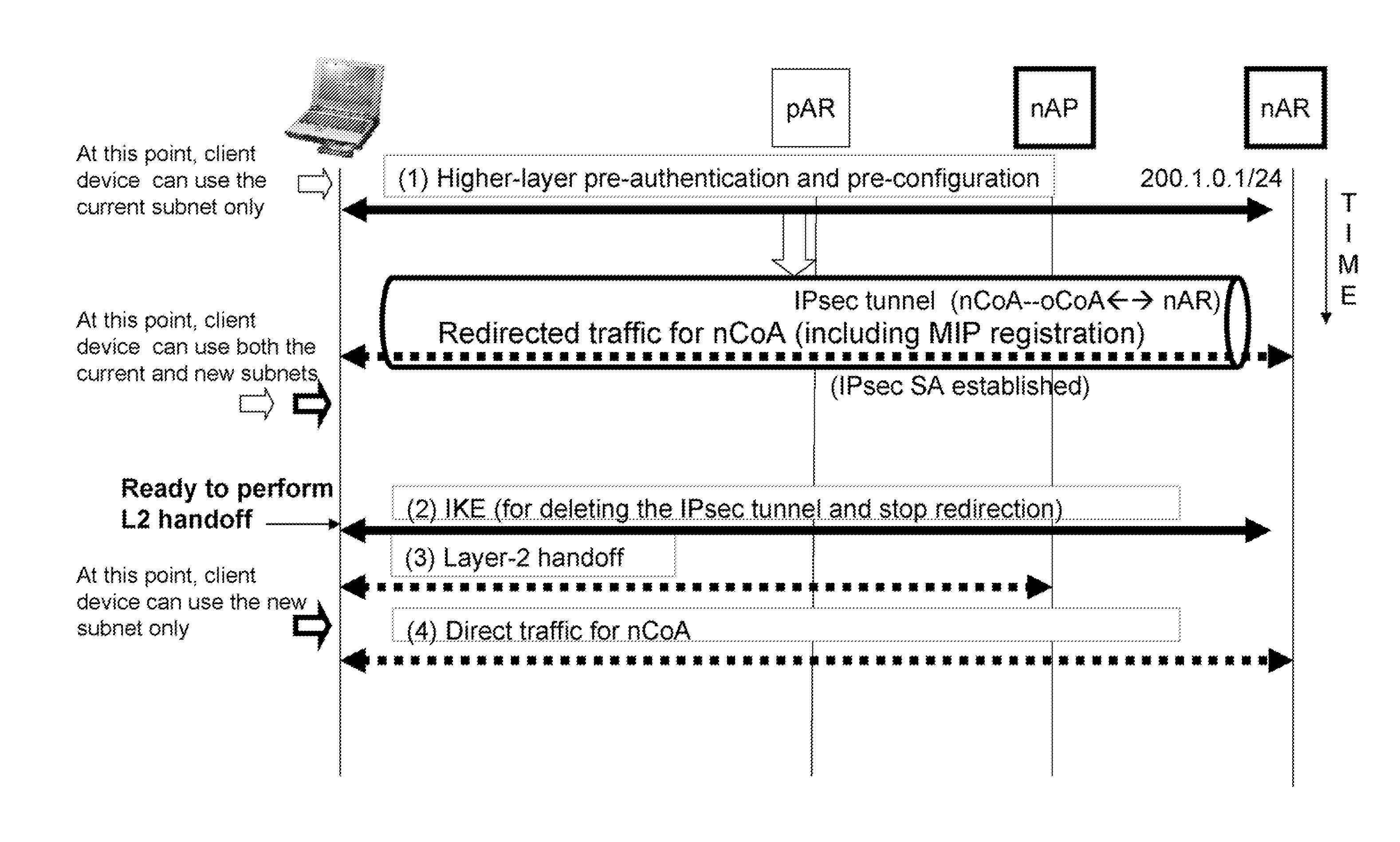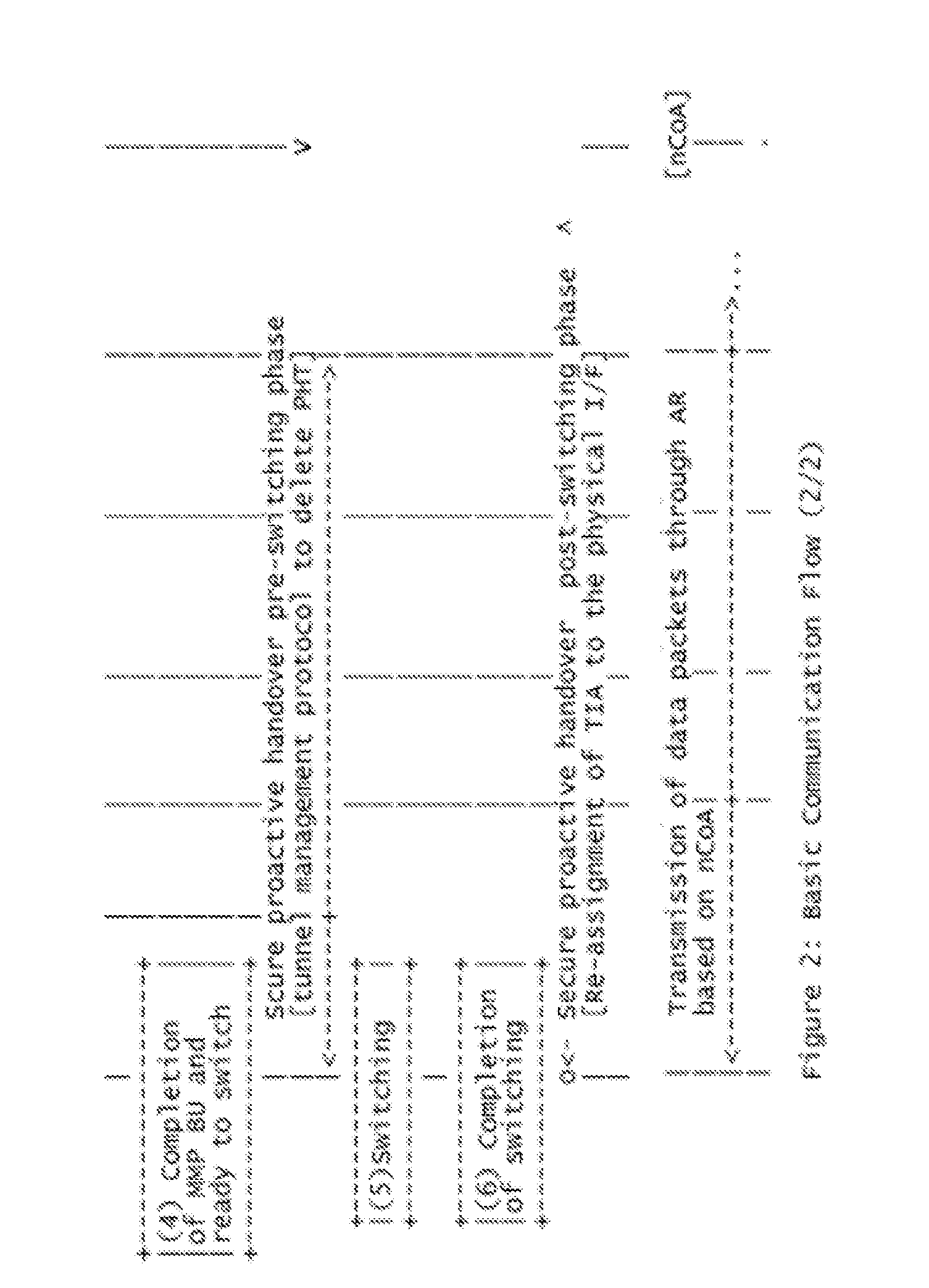MPA with mobile IP foreign agent care-of address mode
a foreign agent and address technology, applied in the field of mpa with mobile ip foreign agent care-of address mode, can solve the problems of inability of nodes to maintain transport and higher-layer connections, and inability to deliver datagrams destined to the nod
- Summary
- Abstract
- Description
- Claims
- Application Information
AI Technical Summary
Benefits of technology
Problems solved by technology
Method used
Image
Examples
Embodiment Construction
[0166] While the present invention may be embodied in many different forms, a number of illustrative embodiments are described herein with the understanding that the present disclosure is to be considered as providing examples of the principles of the invention and that such examples are not intended to limit the invention to preferred embodiments described herein and / or illustrated herein.
[0167] There is an existing problem in that in Mobile IP foreign agent (FA) care-of address mode (FA-CoA mode), the mobile node (MN) has only a home address (HoA) on its interface. As a result, if HoA is used as outer address of the MPA proactive handover tunnel, a routing loop can occur.
[0168] In this regard, FIG. 7 shows illustrative architecture in which such a routing loop can occur. With reference to, a mobile node is designated as MN and has a home address designated as HoA. In this example, the mobile node MN is being transitioned between a previous foreign agent pFA and a new foreign age...
PUM
 Login to View More
Login to View More Abstract
Description
Claims
Application Information
 Login to View More
Login to View More - R&D
- Intellectual Property
- Life Sciences
- Materials
- Tech Scout
- Unparalleled Data Quality
- Higher Quality Content
- 60% Fewer Hallucinations
Browse by: Latest US Patents, China's latest patents, Technical Efficacy Thesaurus, Application Domain, Technology Topic, Popular Technical Reports.
© 2025 PatSnap. All rights reserved.Legal|Privacy policy|Modern Slavery Act Transparency Statement|Sitemap|About US| Contact US: help@patsnap.com



